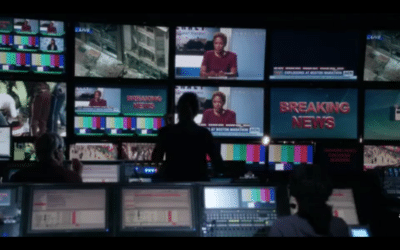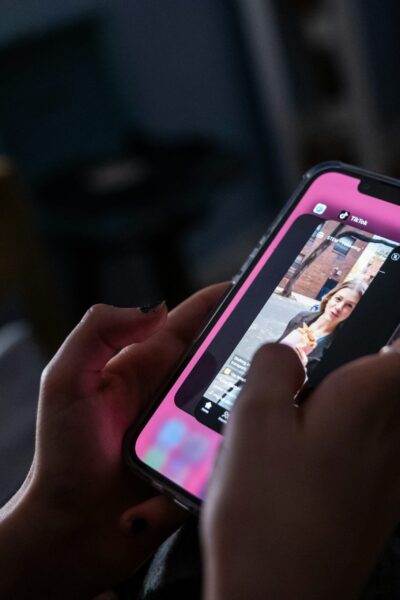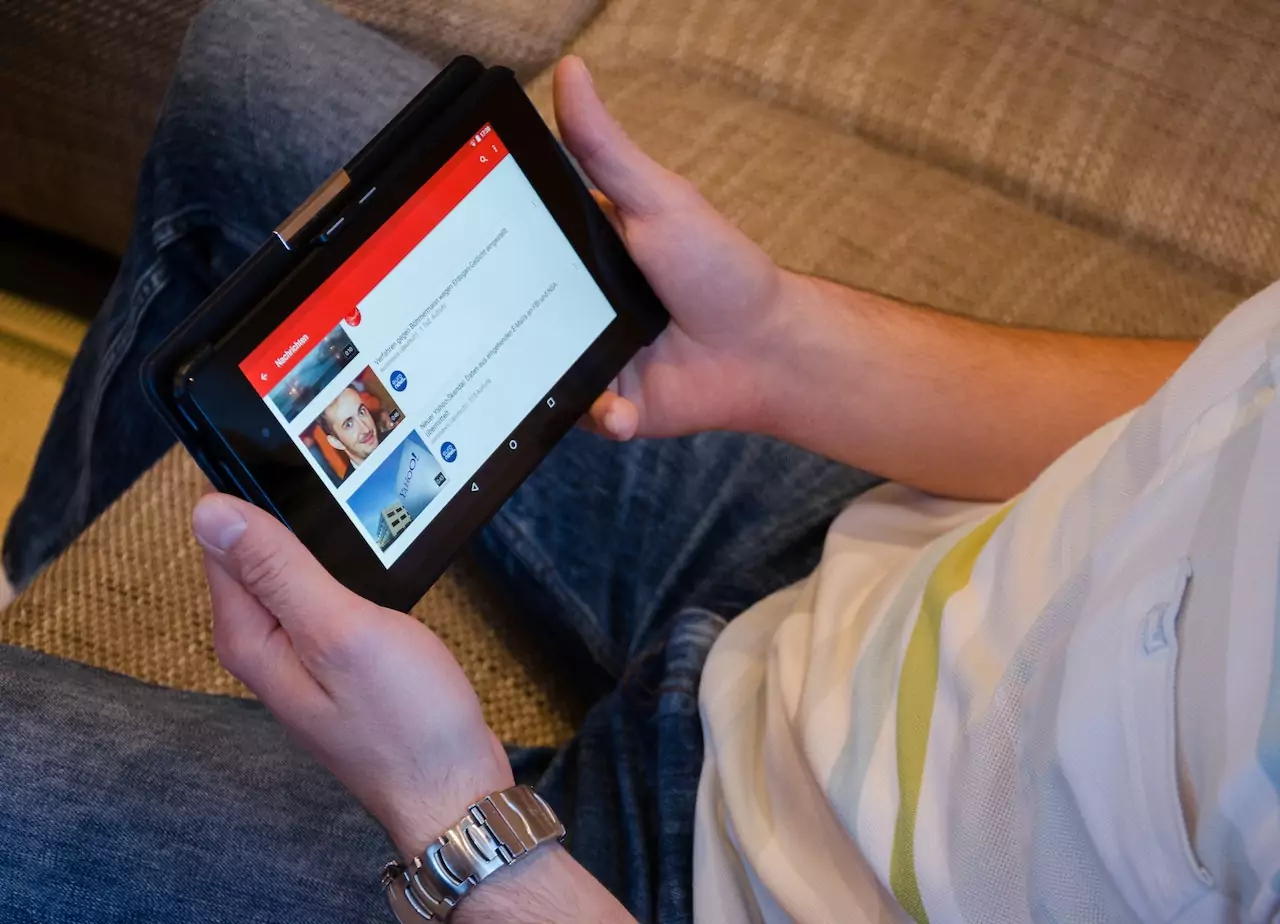Nachrichtenorganisationen sehen sich mit der Realität konfrontiert, dass die digitalen Medien damit begonnen haben, die Macht von Zeitungsredakteuren und Rundfunknachrichtendirektoren auf ihr ehemals passives und abhängiges Publikum zu übertragen. Mobile und soziale Medien beschleunigten den Wandel, da sie es dem Publikum ermöglichten, fast alle gewünschten Informationen zu erhalten, wann immer sie es wollten und auf jedem Gerät, das sie verwendeten. Jetzt haben die Zuschauer die Macht der Wahl, die sie nie zuvor hatten.
Das Publikum ist nun unabhängig von seiner früheren symbiotischen Beziehung zu einem Nachrichtenanbieter, Vermarkter oder Kommunikationsdirektor. Diese Unabhängigkeit gibt dem Publikum die Möglichkeit, sich miteinander zu vernetzen, was den Informationsfluss dramatisch verändert. Wir müssen noch viel darüber lernen, wie man in einer Kultur arbeitet, in der das Publikum die Macht hat, die früher ausschließlich Redakteure und Kommunikationsdirektoren, unsere ehemaligen „Entscheider“ und Gatekeeper, hatten.
Früher bestand die Möglichkeit, ein Publikum zu informieren, darin, mit ihm (nicht mit ihm) in einem „Eins-zu-viele“-Modell zu kommunizieren, bei dem der Informationsfluss von der Quelle nahezu einseitig zu den einzelnen Zuschauern verläuft. Einzelpersonen waren nicht miteinander vernetzt. Sie wussten nichts voneinander und kommunizierten auch nicht miteinander. Sie kommunizierten auch selten und nur mit großem Aufwand an die Organisation. Es gab praktisch keine Feedbackschleife und keine Echtzeitreaktion.
Dieses Kommunikationsmodell bringt bequem einen hierarchischen, autoritären Führungsstil mit einem einseitigen Machtfluss von der Führungskraft zu den Mitarbeitern mit sich, der den Informationsfluss von der Quelle zum Publikum nachahmt. Durch die Kombination eines One-to-Many-Kommunikationsmodells mit einer hierarchischen Organisationsstruktur entstand eine Kultur mit wenig Feedback an Führungskräfte, die dann so agieren konnten, als ob das Publikum nicht da wäre. Führungskräfte von Organisationen fühlten sich wohler, dass sie bei ihrer Entscheidungsfindung keine direkten Meinungen des Publikums einbeziehen mussten.
Ein Zeitungsbeispiel
Zeitungsredakteure treffen sich jeden Tag, um die besten Geschichten für die Zeitung des nächsten Tages auszuwählen, insbesondere für die Titelseite. Normalerweise treffen sie sich wöchentlich, um über die Sonntagszeitung oder Sonderausgaben zu sprechen. Sie nutzen ihre journalistische Erfahrung und ihr Wissen über die Community, um beispielsweise zu entscheiden, dass es in dem ausführlichen Artikel am Sonntag um die zunehmende Kriminalität oder vielleicht um die sich verändernde Vielfalt der Community gehen soll. Mehr als hundert Jahre lang schien der Prozess gut zu funktionieren. Aber sobald die digitalen, dann mobilen und sozialen Medien es dem Publikum ermöglichten, sich zu vernetzen, miteinander zu sprechen und auch unmittelbar mit der Nachrichtenorganisation zu sprechen, wurde aus dem One-to-Many-Kommunikationsmodell ein „Many-to-Many“-Modell. Dieses neue Modell erfordert ein neues Verhalten von Nachrichtenorganisationen.
Das Publikum kann nun untereinander diskutieren und die Nachrichtenorganisation oder das Unternehmen aus dem Gespräch herauslassen. Redakteure und Kommunikationsleiter waren schnell nicht mehr die einzigen Informationsquellen, die das Publikum erreichten, sondern wurden potenziell ignoriert oder ausgeschlossen.
Für Redakteure, die früher selbst bestimmen mussten, was das Publikum wann erfahren würde, war ein unabhängiges, selbstbestimmtes und vernetztes Publikum, das nicht auf die Nachrichtenorganisation angewiesen war, um seine Informationen zu erhalten, ein Kulturschock. Das Many-to-Many-Modell erfordert neue Denkweisen über die Rolle der Nachrichtenorganisation in einem neuen Informationsökosystem, in dem das Publikum mobile Medien nutzen kann, um die gewünschten Informationen zu erhalten, wann immer es möchte, wo immer es ist und auf welchem Gerät es sich auch befindet verwenden.
Dadurch wird das Publikum zu einem unabhängigen, kraftvollen Element im Zentrum des Informationsökosystems. Redakteure mussten fast über Nacht ihre Meinung darüber ändern, wie sie mit dem Publikum kommunizieren. Redakteure und Kommunikationsdirektoren müssen lernen, mit einem Publikum zusammenzuarbeiten, vor dem sie früher gesprochen haben. Sie müssen auch nicht raten, was das Publikum interessiert. Sie können fragen und erhalten sofort Antworten.
Lernen Sie, akzentfrei über soziale Medien zu sprechen
Die Vorteile des neuen Informationsökosystems, das durch mobile und soziale Medien geschaffen wird, kommen nur dann zum Tragen, wenn Sie die neue Kultur, die sie schaffen, akzeptieren und daran teilhaben können. Es reicht nicht aus, Social-Media-Seiten zu erstellen. Wenn Sie einen Twitter-Feed und eine Facebook-Seite erstellen, um für Ihre Geschichten oder Projekte zu werben, fügen Sie neue Tools hinzu, ohne sich darüber im Klaren zu sein, dass deren inhärenter sozialer Charakter eine Änderung Ihrer Natur und Ihrer Arbeitsweise erfordert. Das Hinzufügen neuer Technologien ohne Teilnahme an der neuen Kultur, die sie schaffen, ist ein teilweiser Fortschritt. Das Publikum versteht, dass Sie es versuchen. Aber sie verstehen auch, dass Sie darin kein Muttersprachler sind und es nicht so anwenden, wie sie es tun. Es ist, als ob ich eine Rede auf Englisch halten würde, und ich würde mit starkem russischen, chinesischen oder französischen Akzent sprechen. Die Zuhörer können mich verstehen, müssen sich aber ein wenig anstrengen und wissen, dass ich kein Muttersprachler bin. Auf diese Weise erscheinen die Social-Media-Versuche vieler Nachrichtenorganisationen einem jungen Publikum. Wir sprechen Social Media mit starkem Akzent.
Soziale Medien sind nicht nur Technologien, die man der Nachrichtenredaktion hinzufügen kann. Sie verändern die Kultur, in der diese Nachrichtenredaktion wirksam sein möchte. Soziale Medien erfordern eine aktive Beteiligung des Publikums. Sie sind mit integrierter Multi-Netzwerk-Kommunikation ausgestattet. Sie fordern eine Kultur mit einem aktiven, sprechenden und selbstbestimmten Publikum, auf das Nachrichtenorganisationen noch nie zuvor achten mussten.
Um auf das Beispiel der Story-Meetings der Zeitung zurückzukommen: Redakteure, die die Kultur der sozialen Medien nutzen, können mit ihrem Publikum zusammenarbeiten, um besser zu erfahren, woran das Publikum interessiert ist. Sie müssen nicht raten. Nachrichtenorganisationen können auf Twitter, Facebook oder Instagram fragen, woran ihr Publikum arbeiten soll. Deshalb können sie Geschichten schreiben, die Fragen beantworten, die das Publikum interessieren. Sie können nach Quellenverbindungen fragen. Sie können mit dem Publikum zusammenarbeiten, um Ideen und Quellen zu erhalten. Eine Partnerschaft erhöht das Vertrauen des Publikums in Sie und Ihre Botschaft. Für eine Organisation, deren Wurzeln im Top-Down-Management in Eins-zu-Viele-Kommunikationsmodellen liegen, ist dies jedoch noch relativ fremd.
Kommunikationsorganisationen müssen auch bedenken, dass soziale Medien nicht nur ein weiteres Tool sind, das auf die gleiche Weise und für den gleichen Zweck wie alle anderen Tools und Techniken genutzt wird. Sie haben die Art und Weise, das Publikum zu erreichen, verändert. Sie sind ein indirektes (Marketing) und ein direktes (Engagement) Mittel, um junge Menschen zu erreichen.
Terminbesichtigung? Warum?
Die heutige junge Generation vereinbart keine Termine, um sich zu informieren, wie die älteren Generationen es taten, als sie die Lieferung einer Zeitung bestellten oder sich zu einer bestimmten Zeit hinsetzten, um Nachrichten im Fernsehen zu schauen. Die Jugend von heute, unser zukünftiges Publikum, vertraut darauf, dass ihre sozialen Medien ihnen sagen, was wichtig ist. Sie warten entspannt darauf, dass die Neuigkeiten zu ihnen kommen. Sie wissen, dass sie nicht danach suchen müssen. Sie wissen, dass verschiedene Personen in ihren sozialen Netzwerken es ihnen mitteilen werden, wenn Großereignisse eintreten. Soziale Netzwerke verbreiten Informationen in Echtzeit, so dass junge Menschen, die selten eine physische Zeitung lesen, schneller über wichtige Neuigkeiten informiert sind als ihre Eltern oder Großeltern, die auf die Zeitung vor ihrer Haustür oder auf die Abendnachrichten warten.
Wenn Sie soziale Medien als Nachrichtenquelle nutzen, haben Sie den Vorteil, dass Ihre Informationen von jemandem stammen, dem Sie bereits vertrauen und der sich bereits für die Aufnahme in Ihr Netzwerk entschieden hat. Nachrichten aus Ihrem sozialen Netzwerk sind eine Antwort auf das geringe Vertrauen, das ein Großteil der Öffentlichkeit in Nachrichtenorganisationen und offizielle Institutionen hat. Nachrichten von Menschen, die Sie kennen, genießen von Natur aus mehr Vertrauen als Nachrichten von einer Institution, mit der Sie noch nie eine Beziehung hatten. Die Herausforderung besteht darin, wie Nachrichtenorganisationen davon profitieren können. Sie müssen damit beginnen, die Sprache der sozialen Medien zu sprechen.
Neue, junge Mitarbeiter müssen auf ihr Wissen über die Echtzeit-, interaktive und partizipative Social-Media-Kultur vertrauen können, nicht nur auf ihre Fähigkeit, zu twittern und die Facebook-Seite zu aktualisieren. Soziale Medien sind die neuen Werkzeuge, die erfahrenen Journalisten oder Kommunikationsdirektoren helfen, Informationen auf neue Weise zu sammeln oder recherchierte, verifizierte Geschichten auf neuen Plattformen zu erzählen. Traditionelle Organisationen brauchen die Fähigkeit junger Menschen, mit weniger Akzent in sozialen Medien zu sprechen. Junge, neue Mitarbeiter können Nachrichtenorganisationen helfen, die den Veränderungen des Informationsökosystems vertrauen und diese umsetzen können, die junge Menschen innerhalb der Organisation bewirken können.









